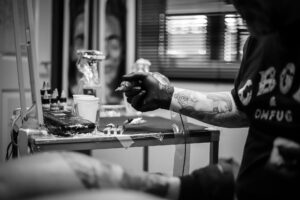Thoracic surgeons- often grouped with cardiac or heart specialists for cardiothoracic surgery- operate on the lungs, trachea, esophagus, and major blood vessels in your chest. They also treat lung diseases and cancers.
Your recovery depends on your diagnosis and how well you follow your doctor’s directions. This includes eating healthy and exercising regularly, avoiding smoking and high-impact activities.
Basics
Thoracic surgeons (lung, esophagus, and chest wall specialists) treat diseases or injuries in the lungs, esophagus, trachea, diaphragm, and ribs. They often perform surgeries like coronary artery bypass grafting and lobectomy.
Before your surgery, you will need imaging and tests to determine what’s causing your symptoms. Your provider may also use an incentive spirometer to help you practice deep breathing and coughing, which can improve lung capacity.
You will need a Health Care Proxy form to designate a person to speak on your behalf if you cannot communicate. It would be best to have this ready before your surgery, as you must have this document with you at the hospital. Also, please stop smoking and wear loose-fitting clothes. You should also remove jewelry, including body piercings. This will make getting the needles for blood tests and other treatments easier.
Preparation
Thoracic surgeons like Armen Parajian perform operations on the lungs, esophagus (food tube), trachea (windpipe), chest wall, diaphragm, and the area around the heart. They also treat diseases and injuries to these organs, including lung cancer, which kills more people than colon, prostate, and breast cancer combined, and other thoracic conditions such as esophageal or chest trauma.
Before surgery, you will have a medical test to make sure you are healthy enough for surgery. It would be best if you also stopped taking any medications that contain aspirin or clopidogrel two weeks before the procedure.
You can have thoracic surgery through a thoracotomy, which involves one large incision on your side or back, or video-assisted thoracic surgery (VATS). With VATS, your doctor makes smaller incisions on your side or back and uses a long, thin video camera to guide their surgical tools. Doctors can sometimes even use a robot to control the video camera and surgical tools. This is called robotically-assisted thoracic surgery.
Procedures
Once you’ve received anesthesia through an IV and are asleep, your doctor will make one to five small incisions in your chest. They may cut through your breastbone (sternotomy) or between your ribs (thoracotomy). The surgeon will then repair, remove, or replace the organ or tissue that needs to be fixed.
Cardiothoracic surgeons treat diseases or injuries to the structures inside your chest cavity. These include your lungs, esophagus, trachea (windpipe), diaphragm, and chest wall. They also perform lung transplants and provide tissue or biopsies to diagnose chest problems like lung cancer.
If you have a lung tumor, your surgeon might perform a wedge resection to remove the portion of your lung with cancer. They can do this through a larger incision on your chest wall called a thoracotomy or minimally invasively with wristed robotic instruments attached to a camera in your chest, which is called video-assisted thoracoscopic surgery, or VATS. They may also remove a lung or part of the chest lining to look for tumors in lymph nodes or other places.
Recovery
During recovery, you’ll probably have to stay in the hospital for several days. Then you’ll be able to go home. You might have to take medication to control pain and other symptoms for a while after you leave the hospital.
After surgery, you might need to insert a chest tube into your lung to drain extra fluid or air leaking into your lungs (and help them re-inflate). Your doctor might also insert one of these tubes into your stomach to help you pass gas and have bowel movements again.
Your doctor might suggest a mini-thoracotomy for you, which means they’ll cut your ribs, but it’ll be 2 to 3 inches long instead of 6 inches. This usually causes less pain and helps you recover faster than a full-scale thoracotomy. Trying to get out of bed and walk around a bit each day is a good idea – this will help your lungs to work correctly again.



